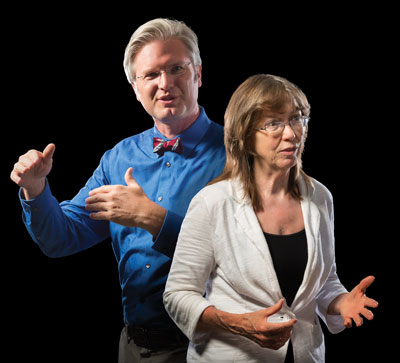Working to free the data

While the health care industry spends plenty of time developing innovative devices, techniques and technologies, we’ve put relatively little time into figuring out how to connect them across providers, clinics, hospitals, institutions and countries. In fact, according to a 2014 study published in Health Affairs, only 14 percent of providers share any health data outside of their systems.
The experts in our biomedical informatics department, the first of its kind in the nation, want to change that—and they believe that liberating health data from its institutional and technological chains is a big part of the solution. “It’s outrageous to think that we’ve known medical best practices for decades, but we haven’t found ways to apply them globally,” says Kensaku Kawamoto, M.D., Ph.D., assistant professor of biomedical informatics. “To really advance health care, we need to take this knowledge and make it interface across all our systems, so that it flows everywhere.”
As part of a coordinated effort to make data useable and exchangeable worldwide, Kawamoto works with a dream team of diverse biomedical informaticians within our system and across the nation to develop standards and protocols for health information. However, the process is slow, difficult and rife with roadblocks, in part because EHR vendors have traditionally resisted this type of interoperability, which would mean playing nice in the sandbox with arch-competitors. “It is a challenge,” says Kawamoto. “Making systems interoperable means making it easier for a customer to switch EHR products – which is generally not in the interest of the vendor.” Wendy Chapman, Ph.D., chair of the Biomedical Informatics department, adds that there’s plenty of blame to spread around, and health care institutions are just as culpable as EHR vendors. “Much of the information we need to connect is out there, but it’s stuck in silos, and so are we. That’s a big part of what keeps us from integrating.”
With health organizations under increasing pressure to comply with the federal government’s Meaningful Use Stage 2 requirements, which mandate interoperability between EHR systems nationwide, some of these barriers may be removed sooner rather than later, clearing the way for a viable health information exchange. When medical innovation and best practices can flow freely across geographic, organizational and vendor boundaries, clinical decision making can improve everywhere, from rural clinics to urban hospitals, giving patients better-than-ever care at the lowest possible price. “We’re not in this to solve a business problem for our academic medical center,” says Kawamoto. “We’re working to solve a global health care problem.”




